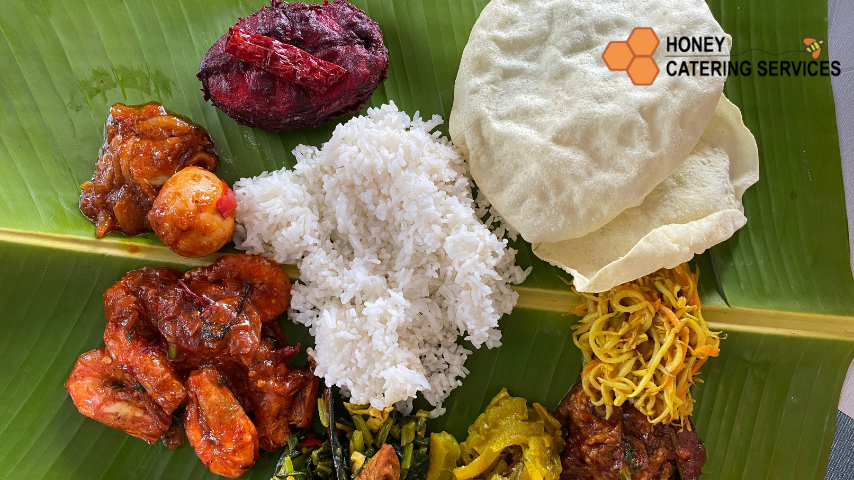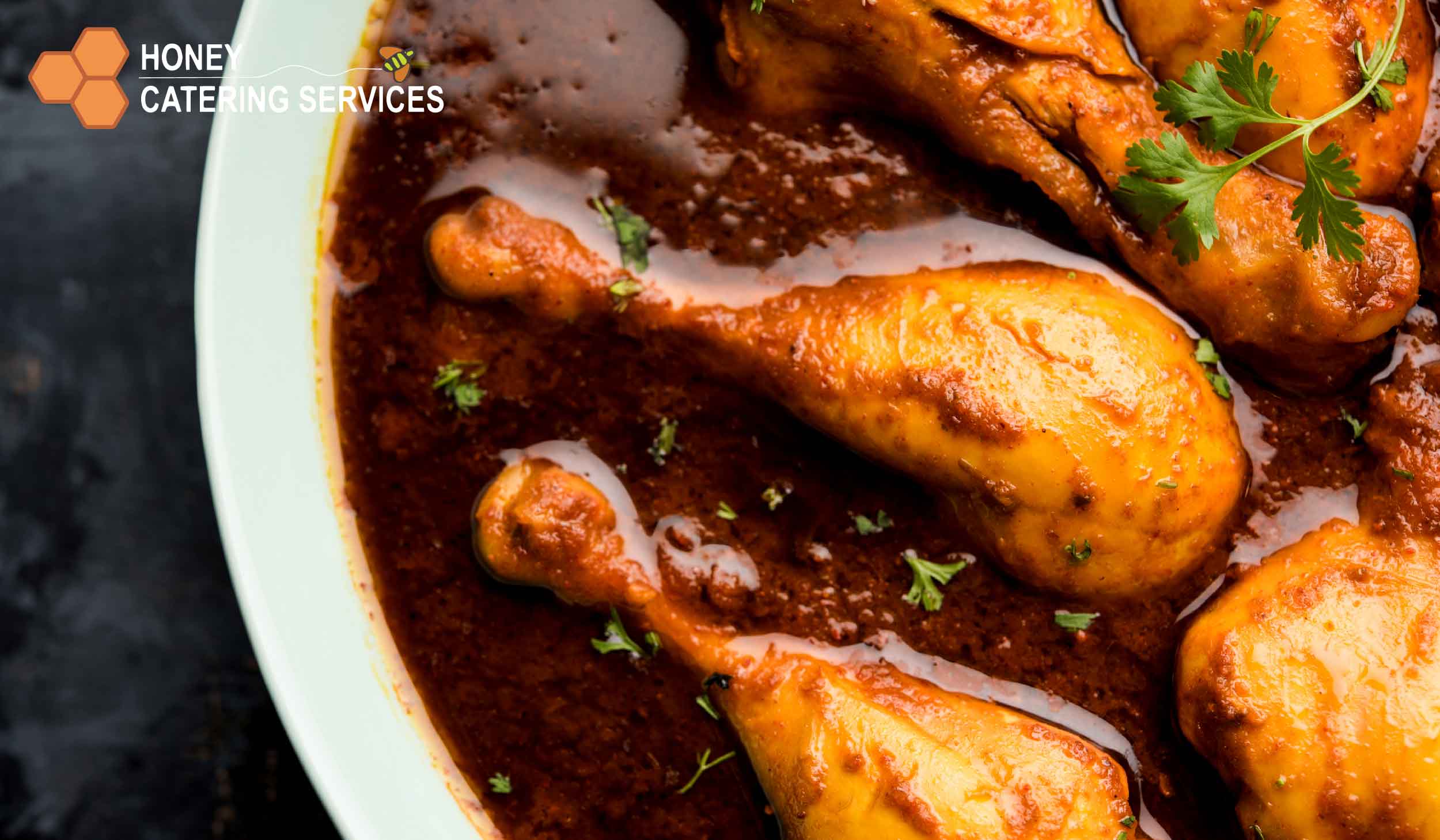South Indian cuisine & South Indian Menu is much more than just a collection of recipes; it’s an intricate tapestry woven from the rich heritage, climate, and culture of the southern states of India. Comprising Tamil Nadu, Kerala, Karnataka, Andhra Pradesh, and Telangana, the region boasts one of the most diverse and flavorful food traditions in the world.
The hallmark of South Indian food lies in its bold use of spices, distinct flavor profiles, and a perfect balance between healthy and hearty.
1. Beyond Dosa and Idli: The Richness of South Indian Staples
While dosa and idli are often the ambassadors of South Indian cuisine, there’s an entire world of unique dishes that reflect the region’s culinary diversity:
- Ragi Mudde (Karnataka): A dense, nutrient-packed dish made from finger millet, often served with spicy sambar or green leafy curries.
- Kootu (Tamil Nadu): A comforting vegetable and lentil stew, subtly flavored with coconut and spices, often part of a traditional Tamil meal.
- Puttu and Kadala Curry (Kerala): Steamed cylinders of ground rice layered with coconut, paired with black chickpea curry—a Kerala breakfast staple.
- Pulihora (Andhra Pradesh): Also known as tamarind rice, it’s tangy and spiced, traditionally made for festivals or as a special offering in temples.
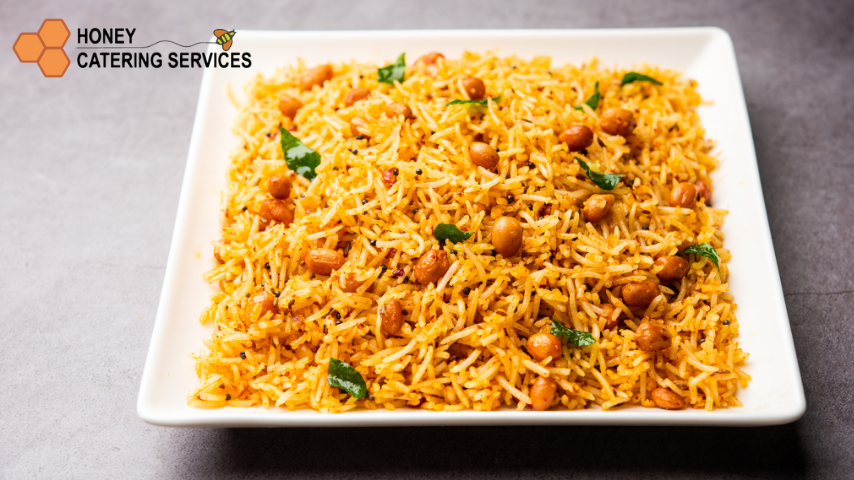
Each state showcases its connection to local ingredients and unique culinary heritage through these less globally known but equally delicious dishes.
Click here to know South indian breakfast for corporate events
2. A Symphony of Spices and Flavors
South Indian food is a celebration of spices, but it’s not just about heat—it’s about balance. Here’s what makes it special:
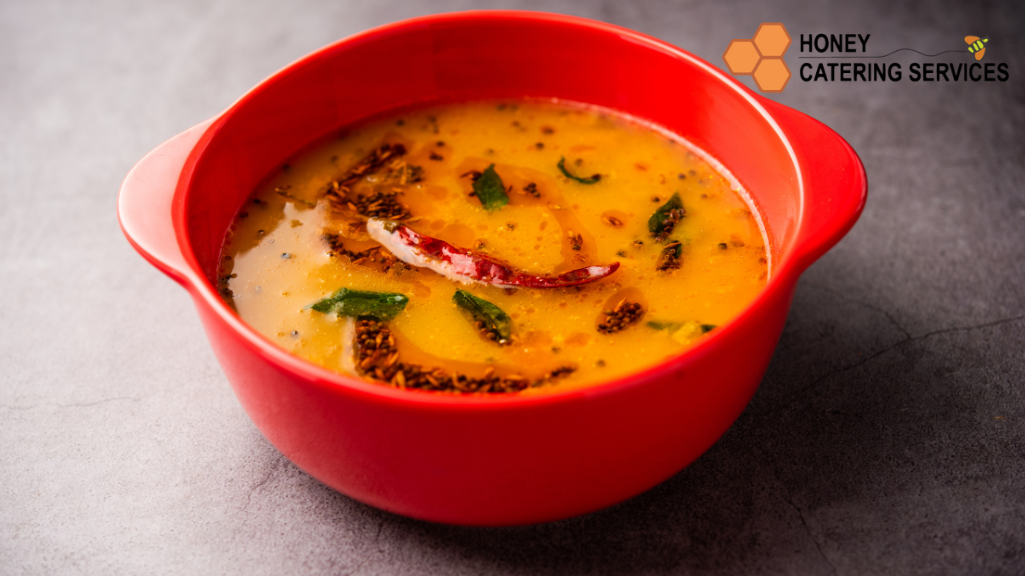
- Curry Leaves and Mustard Seeds: Often the first ingredients that hit the oil in the pan, releasing a fragrance that forms the base of many dishes.
- Tamarind and Kokum: These souring agents add a signature tang to many South Indian curries and broths, like sambar or rasam.
- Fresh Coconut: Used in Kerala dishes like Avial or Thoran, and in chutneys across the region, coconut adds richness and depth to the cuisine.
- Jaggery: A unique unrefined sugar, adding a slight sweetness to balance the heat and tang in dishes like sambar or puliyodarai (tamarind rice).
Spices like cinnamon, cardamom, black pepper, and red chilies, along with fresh herbs, play key roles, offering a layered experience that defines the complexity of South Indian food.
3. Tiffin Time: The South Indian Art of Snacking
Tiffin is more than just breakfast—it’s a culture. South Indian tiffin food items are light yet satisfying, perfect for any time of day:
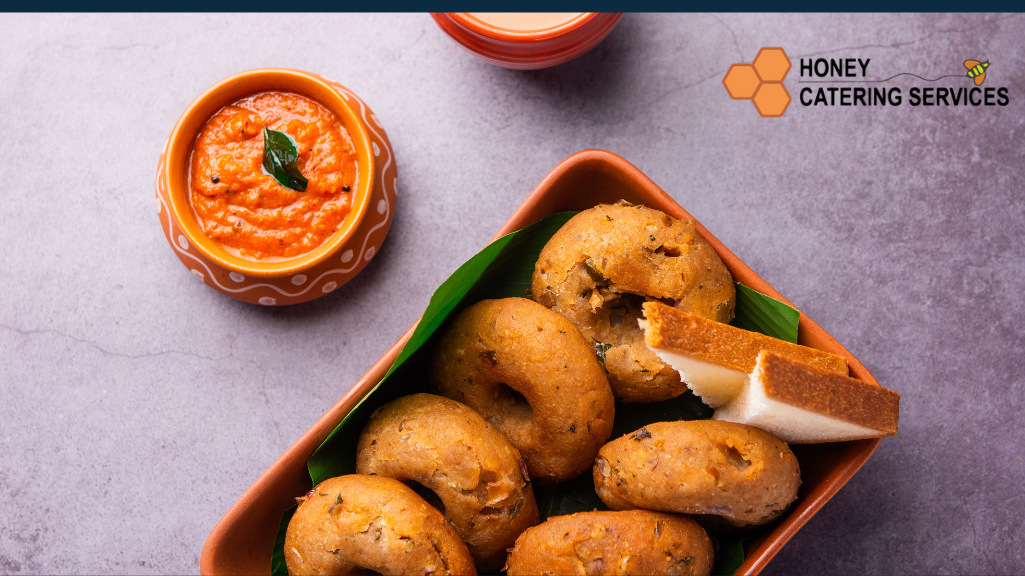
- Uttapam: A thick, savory pancake topped with onions, tomatoes, and chilies, served with tangy chutney and sambar.
- Medu Vada: Deep-fried lentil doughnuts, crispy on the outside, soft on the inside, usually dunked in coconut chutney or sambar.
- Kara Paniyaram: Bite-sized, savory dumplings made from fermented rice batter, a lesser-known but absolutely delightful South Indian snack.
These dishes showcase the ingenuity of South Indian cuisine, which thrives on fermentation, creating food that is light, healthy, and packed with flavor.
4. A Feast for the Festivals: The Role of Food in Celebrations
Festivals in South India are incomplete without elaborate feasts. Whether it’s the grand Onam Sadya in Kerala, featuring a wide array of vegetarian dishes served on a banana leaf, or the Pongal celebration in Tamil Nadu, where freshly harvested rice is used to make sweet and savory versions of Pongal, food is central to the joy of these festivals. Every event and festival has its own collection of goodies.
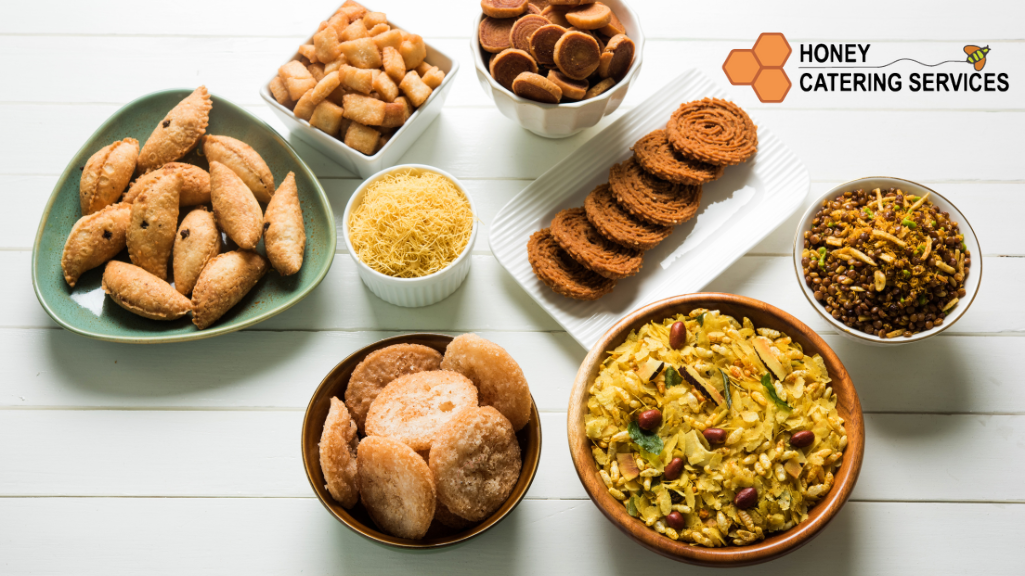
- Sweet Pongal: A dessert made from rice, jaggery, and ghee, served during the harvest festival of Pongal. Click here to know full sweet pongal recipe
- Puliyodarai (Tamarind Rice): A tangy rice dish, often offered as prasad in South Indian temples.
- Bobbatlu or Puran Poli(Andhra Pradesh): A sweet flatbread stuffed with lentils and jaggery, typically made during Ugadi.
These Food dishes are not just food but carry cultural significance, symbolizing prosperity, unity, and the celebration of life.
5. A Culinary Geography: How the Land Shapes the Food
The geography of South India profoundly influences its cuisine. Coastal regions like Kerala and Karnataka’s Udupi area are known for their seafood, with coconut and tamarind playing a central role. Inland regions, like Tamil Nadu and Andhra Pradesh, rely heavily on rice, lentils, and millets, along with fiery curries and pickles.
- Kerala’s Backwaters: Famous for seafood delicacies like prawn curry, fish moilee, and karimeen (pearl spot) fry.
- Tamil Nadu’s Fields: Known for its rice-based meals like variety rice (lemon rice, curd rice) and ghee-rich dosas.
- The Spice Hills of Andhra: With its fiery curries like Andhra Chicken Curry or Gongura Mutton, the region is known for its bold use of red chilies and tamarind.
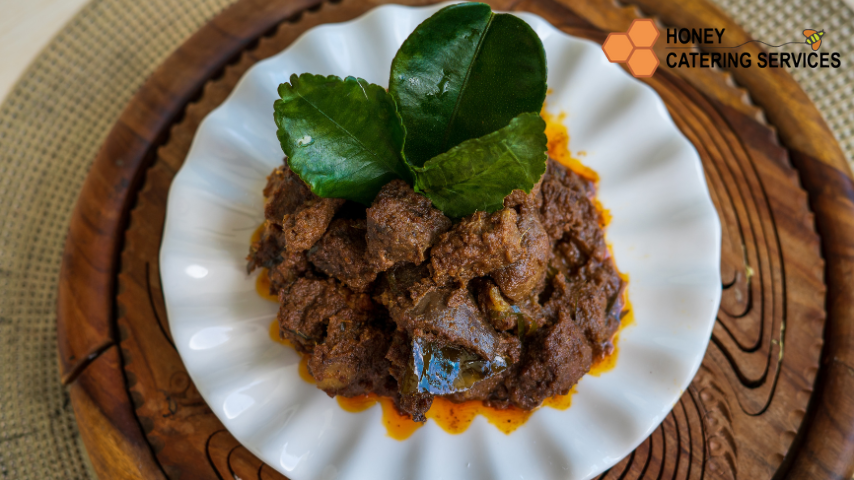
This diverse landscape ensures that South Indian menu and South cuisine remains varied and exciting, deeply connected to its roots in local agriculture.
6. Health in Every Bite: Why South Indian Food Is So Nourishing
South Indian food & the whole South Indian Menu is inherently healthy due to its use of fresh, local ingredients and traditional cooking methods like steaming and fermentation:

- Dosa and Idli: Fermented foods are rich in probiotics, which are great for digestion.
- Millets and Lentils: Staples like ragi (finger millet) and toor dal (pigeon peas) are high in protein and fiber, making the meals balanced and nutritious.
- Minimal Oil: Many dishes are steamed or lightly sautéed, ensuring that the food is not overly greasy, making it heart-healthy and easy on the stomach.
The balanced combination of carbohydrates, proteins, and healthy fats in South Indian meals makes every south indian menu is ideal for maintaining energy levels throughout the day.
Experience Authentic South Indian Flavors with HoneyCatering Services
HoneyCatering Services – The best South Indian Cuisine catering services in Chennai is renowned for delivering the finest South Indian cuisine, capturing the authentic flavors and essence of traditional dishes. With a deep understanding of regional recipes, they expertly craft everything from classic dosas and idlis to rich curries and festive meals.
Why Choose us
1.Diverse South Indian Menu:
HoneyCatering Services offers an extensive menu that spans the rich diversity of South Indian cuisine. From the crispy dosas of Tamil Nadu to the flavorful Kerala seafood and spicy Andhra biryani, they cater to all tastes and preferences.
2.Customizable Catering Options:
Whether it’s a wedding, corporate event, or family gathering, HoneyCatering provides flexible catering options. They also accommodate special dietary needs such as vegetarian, vegan, and gluten-free, ensuring everyone enjoys the meal.
3.Authentic Ingredients and Freshness:
HoneyCatering prides itself on using fresh, locally sourced ingredients and traditional South Indian spices. This commitment ensures that every dish bursts with authentic flavors, just like a homemade meal.
4.Cultural Experience:
With HoneyCatering, you’re not just getting a meal—you’re experiencing the rich cultural heritage of South India. Their presentation, food, and service all come together to create a memorable and immersive South Indian dining experience.
5.Professional Service and Expertise:
HoneyCatering’s team is known for their professionalism and punctuality, delivering flawless service for every event. Their deep expertise in South Indian cuisine ensures every dish is cooked to perfection and served with excellence.
6.Customer Testimonials:
HoneyCatering has built a strong reputation through glowing customer feedback and repeated business. Clients consistently praise the quality, flavor, and authenticity of their dishes, making them a trusted name in catering.
Whether it’s a small gathering or a grand event, HoneyCatering brings the true taste of South Indian cuisine food to your table with excellence.
Conclusion: A Heritage Worth Tasting
South Indian menu is a perfect example of how food can be simple yet profound, flavorful yet nourishing. It is a reflection of the land, its people, and their time-honored traditions. Whether it’s the fiery flavors of Andhra, the coconut-laden dishes of Kerala, or the rich vegetarian meals of Tamil Nadu, South Indian cuisine offers a sensory journey that’s both delicious and deeply rooted in culture.
Every South Indian menu tells a story, and each bite carries a legacy—this is what makes South Indian food so special and beloved, not just in India, but across the globe.

